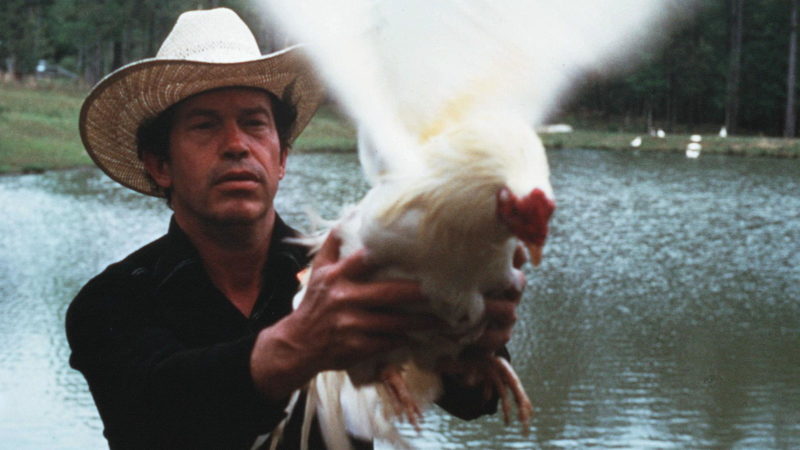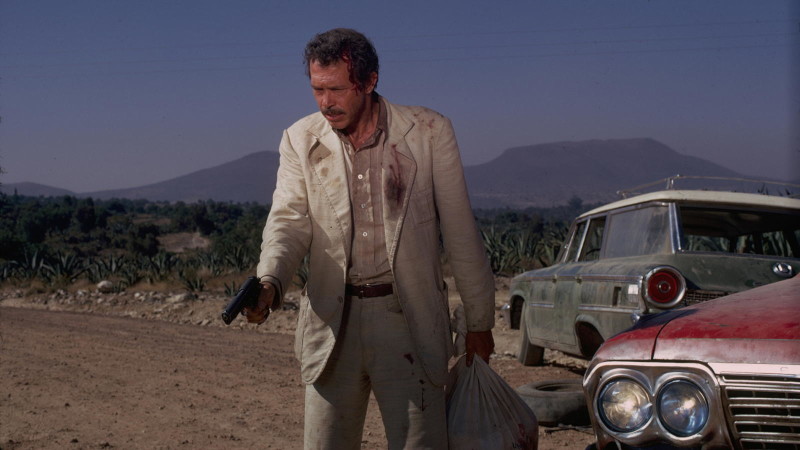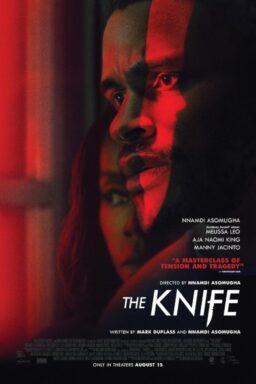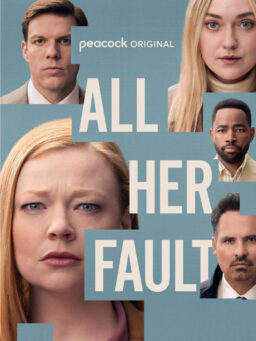In 2000, director Richard Linklater helped assemble a retrospective for cult filmmaker Monte Hellman as part of that year’s South by Southwest festival. For the screening of Hellman’s best-known work, the 1971 existential road race film “Two-Lane Blacktop,” he offered up a list of 16 reasons why he loved it as much as he did. Some of these reasons (which can be found in the Criterion Blu-ray set and on the company’s website) are critically astute and some of them are amusing (“Because Dennis Wilson gives the greatest performance ever … by a drummer”) but #6 is the most direct and profound of the bunch—“Because there was once a god that walked the earth named Warren Oates.” Truer words were never spoken. While he may not have been the traditional leading man type by any stretch of the imagination, Oates’ combination of badass intensity, holy cool and oddball humor made him a favorite amongst the equally iconoclastic filmmakers of his time. Though his career was cut short by his sudden death of a heart attack in 1982, the power of his performances—his ability to make even the most unimaginatively written roles into something interesting and to make the parts better tailored for his unique skill set into something truly extraordinary—has continued to make him a favorite among film buffs more than three decades since his passing.
From July 1-7, that god will walk once again, as the Film Society of Lincoln Center in New York presents “Warren Oates: Hired Hand,” a week-long retrospective consisting of 13 of the most distinctive films of his career. Anchoring the series is a restored presentation of “Private Property,” a 1960 film featuring his first major big-screen performance and for years has thought to be lost. In addition, this retrospective will offer up a cross-section of titles, many of which will be presented in 35mm, which show him as one of the great character actors of his time, as well as one of the more intriguing leading men in the rare occasions he anchored a project. It’s a retrospective that also serves as an alternative history of American cinema in the 1960s and 1970s, thanks to his good fortune to work with some of the most intriguing directors of that time. Sure, one could quibble about the absence of a title or two, but the movies that did make the cut are a strong sampler. There isn’t one film being shown that I would not gladly choose to see over virtually anything currently playing at the local multiplex.
Oates was born on July 5, 1928 and raised in a small town in Kentucky. After leaving a Louisville high school in 1945, he enlisted in the Marines and served as an aircraft mechanic for two years. He then attended the University of Louisville, where he first developed an interest in acting, appearing in a bunch of plays with the Little Theatre Company beginning in 1953. In 1957, he got his first big break when he went to New York City to appear in a live production for the television anthology series “Studio One.” From there, he went to Los Angeles and over the next few years, he made appearances in a number of the Western television shows that were proliferating on the airwaves at the time—“Wagon Train,” “Rawhide,” “Have Gun – Will Travel,” “The Big Valley” and “Gunsmoke,” to name just a few. While working on another popular Western of the time, “The Rifleman,” he made the acquaintance of one of the show’s creators, Sam Peckinpah, and when Peckinpah moved on to create another series, he hired Oates as one of the supporting players, beginning a collaboration that would prove to be significant to Oates’ career.

During this time, Oates made brief appearances in a couple of feature films, such as “Yellowstone Kelly” (1959) and “Up Periscope” (1959) but his first significant big-screen role would come in 1960 when Leslie Stevens—still a couple of years away from creating “The Outer Limits”—hired him to co-star in “Private Property” (pictured above), a strange, psycho-sexual neo-noir riff on, of all things, “Of Mice and Men.” In it, he and Corey Allen (another familiar supporting player getting a rare lead role) play a couple of creepy drifters who decide to focus their lascivious intentions on Ann (Kate Manx, who was married to Stevens at the time), a beautiful but neglected housewife who spends her days lounging around her isolate Beverly Hills home while her businessman husband more or less ignores her. The two guys—who change names at several points—take up residence in an empty house overlooking Ann’s yard and pool and Allen, the more worldly of the two, promises his inexperienced and somewhat slow companion that he will arrange for him to have her. He insinuates himself into Ann’s life by posing as a gardener and she is so flattered to actually be receiving some attention that she fails to pick up the obvious signals that he is trouble. The sexual tension and intrigue between the three continues to grow and when it becomes apparent that the one guy has no intention of sharing Ann with his friend, it all culminates in an explosion of violence.
Watching “Private Property” for the first time recently—which will presumably be the case for most everyone attending this retrospective—I was struck by just how raw and powerful this film was and surprised that it could have vanished for so many years. Yes, there are more than a few moments when you want to strongly advise Ann to do something more logical, but watching her and Allen interact, you eventually understand why someone would buy his line of crap for as long as she does. For his part, Oates has a tricky role in that he is supposed to be as brutish as his partner and yet still come across as somewhat childlike and naive to the ways of the world—he nails it wonderfully so that you can feel his menace along with a certain degree of innocence that eventually is shattered through the betrayal of his friend. Although some might expect a film like this to have a bit of campiness, that is not the case at all. The sexual tension that Stevens slowly builds throughout is palpable and disturbing; when the beautifully appointed home, lawn and pool become the setting for the climactic brutality, it is impossible not to think of another burst of savage violence that would occur in real life in a house not dissimilar to the one shown here, that would in large part help close the decade that this film opened.
From there, Oates went back to television work—adding shows like “The Twilight Zone,” “The Lawless Years” and “Stoney Burke”—and it was at this point that Peckinpah returned to his professional life by hiring him to co-star as one of the fearsome Hammond brothers gunning for Joel McCrea and Randolph Scott in “Ride the High Country” (1962), a Western that would not necessarily become a big box-office hit at the time but would receive rave reviews and announce Peckinpah as a major filmmaker. Over his tumultuous career, Peckinpah would feature Oates in three more of his films. He would play a Confederate soldier forced into participating in an expedition to Mexico in “Major Dundee” (1965) and would turn down the opportunity to play the lead in the popular Western comedy “Support Your Local Sheriff” (1969) to take a supporting role as one of the Gorch brothers in the groundbreaking “The Wild Bunch,” going out in a blaze of gruesome glory in the film’s legendarily violent climax. The productions of those two films were difficult but Peckinpah and Oates were clearly on each other’s wavelength throughout—the roles themselves may not have been that big but one cannot easily imagine either of them without Oates’ indelible presence.

Their partnership reached its zenith in 1974 when Peckinpah gave Oates the lead role in what would prove to be one of the craziest and most controversial films in a career full of them, the infamously titled “Bring Me the Head of Alfredo Garcia” (pictured above), a work that even today has people arguing over whether it is a masterpiece or monstrosity. In it, he plays Bennie, an expat working as a piano player in a sleazy Mexican saloon who is hired by a couple of American hit men (Robert Webber and Gig Young) to help them track down the guy who impregnated the daughter of their powerful and dangerous boss so that they … well, you saw the title. Bennie has a leg up because his girlfriend, Elita (Isela Vega) not only used to date Alfredo but knows that he was recently killed in a car accident. Figuring it is easy money, he and Elita go off to retrieve the head—she is kept in the dark regarding certain aspects of this plan—but things soon go horribly and violently wrong. As a result, Bennie, desperate for revenge and no longer interested in the reward, begins mowing his way through the ranks of anyone with an interest in the head which, once he recovers it, he begins to bond with in an unexpected way.
One of the most nihilistic fever dreams ever committed to film, this blend of jet-black comedy, violent action, romantic tragedy and pure insanity is one of those movies that is so astonishing to behold that even today, it seems impossible that it could have ever made it through the Hollywood system—you can practically smell the bridges that Peckinpah was burning throughout. Some observers have suggested that it is Peckinpah’s most overtly autobiographical film, a baroque fantasy of his desire to take down the studio system and money men that he had been battling throughout his entire career, the people who pay him to do the bloody jobs for them and then try to screw him and his work over at every possible turn. What lends an extra level of credibility to this interpretation is Oates’ astounding performance, in which he delivers a spot-on impression of Peckinpah throughout—even the sunglasses he wears all the way through the film were ones that belonged to the director. Oates’ ability to project grim determination, dark humor, a fearsome capacity for violence and a certain degree of tenderness, sometimes all at once, got its fullest flower here and, like the film as a whole, it is extraordinary to behold. “Bring Me the Head of Alfredo Garcia” was the apotheosis of the Oates-Peckinpah partnership but it would also prove to be the last time that they would work together—then again, after watching this film, it is hard to see where they could have possibly gone from there.
During this time, Oates maintained another long-running collaboration with a maverick filmmaker, Monte Hellman, that began when Hellman hired him to star in “The Shooting” (1966), a low-budget Western in which he plays a one-time bounty hunter who, along with his partner (Will Hutchins) are hired by a mysterious woman (Millie Perkins) to take her to a town called Kingsley. Along the way, they are joined by another man (a then-unknown Jack Nicholson, who also co-produced the film) and tensions among them continue to grow until the film’s weirdly hallucinatory finale. Far more existential in tone than your average Western, neither this nor “Ride in the Whirlwind” (1966), another oater that Hellman and Nicholson made at the same time,” were successful at the box office—they were barely even released—but those who did manage to catch them were knocked out by them and they both eventually went on to become cult favorites.
As with Peckinpah, Oates clearly felt a kinship with Hellman and would work with him three more times over the next few years beginning with the aforementioned “Two-Lane Blacktop,” a film that did for the car movie genre what “The Shooting” did for the Western—replaced the expected cliches with a more existential attitude that would offer viewers more to contemplate than the usual drive-in junk. In the film, two street racers known only as the Driver (James Taylor) and the Mechanic (Dennis Wilson) are heading up Route 66 when they encounter both a beautiful hitchhiker (Laurie Bird) and an older driver known as GTO (Oates). A cross-country race is proposed but no seems to be that heavily interested in it—when GTO gets tired, Driver even winds up driving his car for a while—and tensions are further exacerbated because of the Girl, whose very presence serves as a reminder that for all of their capabilities with a car, neither the Driver nor the Mechanic have any skills when it comes to dealing with an actual human being. By comparison, Oates expertly sketches in enough distinct aspects to his character to make him seem like a real person and as a result, he serves as a sharp rejoinder to the other two while at the still time demonstrating both a sense of humor and a certain sensitivity. As was the case with “The Shooting,” “Two-Lane Blacktop” was not a hit, despite an avalanche of pre-release hype positioning it as the next “Easy Rider.” However, it would also become a cult favorite in years to come with Oates’ performance being singled out for praise in many cases.

Oates gave another of his very best performances with his next project with Hellman, “Cockfighter” (1974, pictured above). Normally the garrulous type, Oates shifted dramatically with his performance as an obsessive gambler specializing in the blood sport of cockfighting who loses everything and chooses to take a vow of silence until he believes that he has won redemption in the ring. It sounds like the grossest of exploitation films, I realize, but Hellman transforms the sleazy to the sublime with a startlingly poetic approach to the material, adapted by celebrated pulp novelist Charles Willeford from his own novel, that makes expert use of the cinematography of the incredible Nestor Almendros and the soulful expressiveness that Oates conveys throughout without saying anything for the majority of the running time. Oates and Hellman would work together one last time on the Western “China 9, Liberty 37” (1978), in which he plays a miner who forms an unlikely friendship with a man (Fabio Testi) ostensibly sent to kill him—a friendship that leads to betrayal when his wife (Jenny Agutter) falls in love with the newcomer.
There was a third extended collaboration that Oates was involved in during this time, that with actor Peter Fonda. In 1971, Fonda, still riding high from the unexpected success of “Easy Rider,” was hired by Universal Studios to make anything that he wanted for a million dollars. Instead of “Easy Rider 2,” Fonda came up with “The Hired Hand” (1971), a surprisingly quiet and thoughtful Western about a cowboy (Fonda) who, accompanied by his steadfast friend (Oates), returns home to the wife (Verna Bloom) and child that he abandoned years earlier and discovers that things have changed in his absence. Between the lovely performances from the three leads and the trippy cinematography by Vilmos Zsigmond (nearly the equivalent of his celebrated work on that other great Western from that year, “McCabe & Mrs. Miller”), I would take this gem of a film over “Easy Rider” any day of the week. In 1975, they costarred in “92 in the Shade,” Thomas McGuane’s adaptation of his comedic novel in which Oates plays a Florida sailor who gets into a bizarre battle of wills with Fonda’s would-be fishing guide. Later that year, they would appear together in the drive-in classic “Race with the Devil,” an action-horror hybrid in which they play friends who go off with their wives in a RV for a ski vacation, only to have their plans interrupted when they inadvertently stumble upon a full-blown Satanic ritual and end up being chased by members of the cult determined to keep them from escaping.
In his career, Oates would appear in films by established directors—he had a key supporting role in the Oscar-winning “In the Heat of the Night” (1967) and worked with Burt Kennedy on “Welcome to Hard Times” (1967) and the scandalous “Drum” (1976), on which Kennedy would be replaced by Steve Carver—but he also showed an affinity for placing himself in the hands of emerging filmmakers as well. In the most famous example of this, he signed on to play Sissy Spacek’s taciturn father in “Badlands” (1973), the first film from Terrence Malick and one of the most acclaimed directorial debuts in screen history—Oates has only a few scenes but his no-nonsense turn is highly effective and remains one of the best performances to be found in any Malick film. Later that year, he got a rare lead when he got the title role in “Dillinger” (1973), an exciting low-budget biopic of the gangster that marked screenwriter John Milius’ first turn as a director and proved once again that Oates could hold attention in a lead role just as well as he could in a supporting part. In James Frawley’s offbeat Western “Kid Blue” (1973), he gives a charming performance as a man who unwisely befriends a former train robber (Dennis Hopper) who is trying to go straight.

In what would prove to be the final years of his career, Oates began to appear in comedies that would take advantage of his tough-guy persona for laughs. “The Brinks Job” (1978) was an extreme change of pace for director William Friedkin, that told the true story of a bunch of hapless criminals plotting the robbery of a couple of million dollars from a lightly guarded Brinks warehouse in Boston in the 1950s; Oates co-starred with Peter Falk and Peter Boyle as one of the men involved in the scheme. Steven Spielberg’s grossly underrated comedy epic “1941” (1979) saw him as a crazed colonel caught up in the war nerves that struck Los Angeles in the immediate wake of the attack on Pearl Harbor and going toe-to-toe with the equally crazed fighter pilot played by John Belushi. Two years later, he went up against another “SNL” alumnus when he played the hard-ass drill sergeant pitted against slacker Army recruit Bill Murray in the hugely popular “Stripes” (1981, pictured above). This was a surprisingly effective performance in that he refused to reduce the character to the cartoonish figure that might have resulted in the hands of a lesser performer—there is a confrontation between him and Murray in a latrine that has a surprising dramatic power to it that works as a counterbalance to the rest of the zaniness. “The Border” (1982) saw him playing the boss of Jack Nicholson’s beleaguered border patrol cop in an intense drama that is ripe for rediscovery and he played the top man behind a series of Tough Man boxing competitions in “Tough Enough” (1983). In his last film, “Blue Thunder” (1983), he played a police captain whose entire job seemed to consist of chewing out a renegade helicopter pilot played by Roy Scheider. Even though he was sharing the screen with a souped-up helicopter and Malcolm McDowell in full scenery-chewing mode, Oates kind of stole the film by investing every one of his admittedly clichéd lines with a kind of world-weary authenticity and sly humor that made them sing.
By the time “Blue Thunder” was released, however, Oates had been dead for more than a year. One wonders how he might have fared in the increasingly homogeneous Hollywood film industry that was more than ever beginning to push quirky character actors like him to the side. As an actor who clearly did not suffer too many fools, it is hard to seem him thriving in a milieu that was shifting into a blockbuster mentality that didn’t have much room for the oddball projects that gave him some of his best material. On the other hand, one can easily imagine a director like Quentin Tarantino, an avowed fan of Oates, giving him the kind of meaty role that he used to get from similarly independent-minded filmmakers like Peckinpah and Hellman. In “Blue Thunder,” there is a great moment when, surprise, he chews out Roy Scheider by stating “But there’s a bright side to this and a moral. I think morals are good for you. I love morals and the moral of this story is: if you’re walking on eggs—don’t hop.” Thinking about that quote, I have come to the conclusion that when Linklater made the statement that I quoted in the opening of this article, he was only half-right in describing Warren Oates—he was indeed a god but he was one who most definitely hopped.
“Warren Oates: Hired Hand” runs July 1-7 at the Film Society of Lincoln Center in New York. For further information, including showtimes, click here.












